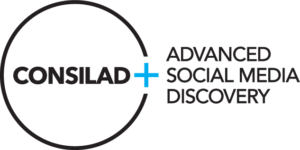Psychological Claims
Verify with OSINT and SOCMINT
Roles:
Inform IMEs where patient / claimant self-reporting is incomplete or unreliable.
Provide objective data from patient authored sources and third party sources which can be used to test or compare self-reports to indicate degree of impairment, MMI, cause of injury, comorbidity and truthfulness of disclosures.
References:
American Medical Association’s Guides to the Evaluation of Permanent Impairment, 5th Edition (AMA5).
NSW workers compensation guidelines for the evaluation of permanent impairment (2021).
DSM-5-TR Diagnostic and Statistical Manual of Mental Disorders (2022).
Concepts and principles
- Data from social media and online sources can be used to test, augment or verify self-reported injury or impairment.
- We provide non-determinative reports of activity or observations but not opinion.
- The data typically indicates capacity and disposition of claimants.
- Our reports do not challenge or contest diagnosis.
- Reliability is typically good e.g. photographs posted by subjects providing a record of activity or uncontested contemporaneous posts of the subjects posted by close contacts or organisations.
- OSINT and SOCMINT product includes longitudinal or chronological perspective which is not easily replicated by substitutes e.g., observations of pre-claim activity, impact of claim, medical interventions etc.
Forensically collected OSINT:
Reliable – forensic and eDiscovery methods provide demonstrably more reliable data or show lower certainty if anecdotal. Non-forensic methods do not address the inherent risks of applying data out of context (e.g. date) or meaning (e.g. argots, sarcasm) or digital manipulation.
Objective – informs clinical or legal users – observations relevant to assessment of assertions in claims. Data not opinion.
Efficient – from automated collection through to presentation in formats designed to maximise efficiency, forensic methods reduce costs and provide work product which is easier to consume. Layouts assist medical or legal practitioners (e.g., collated or tagged in PIRS categories, chronologically) so that the practitioner can efficiently juxtapose / compare self-reports and other data with the objective data we provide.
Compliant – forensic collection and data preservation methods show how, when and where the data was collected and the method used to access the data. Attribution of source, date, commentary, full metadata and the context of other posts allow data to be shown as unchanged and authentic.
